14 December, 1999
The two main substances in Antarctica are rock and ice. To learn more about
these materials and the secrets they hold scientists drill holes in them.
Then bring up the cores from the holes and study what they find.
The Cape Roberts Project involves drilling rock cores from the bottom of the
ocean. The goals of this experiment are to learn more about how Antarctica
was formed and what the climate has been like here over that last 30-50
million years. The project has been several years in the developing and
execution, this was its last year. The drill site is about 100 miles north
of Mcmurdo near the edge of the ice shelf. To learn more about this project
see the web pages of Bruce Smith another TEA who was assigned to this
project (Journal Nov 16)
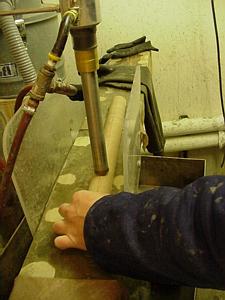
1. From the drill site, the cores are brought back to Crary Lab at Mcmurdo Station for processing. They are shipped in 1 meter lengths and arrive at the lab in boxes. First they are sliced lengthwise, half for study now and half for archiving. This is a picture of the cutter slicing the cores in half.
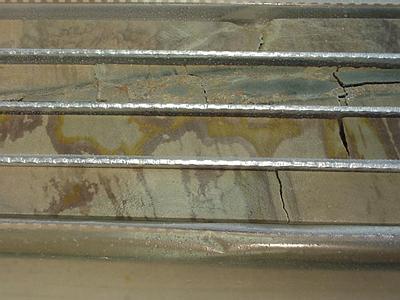
2. Here you see some of the cores, notice the great colors in the rock. These samples are several million years old.
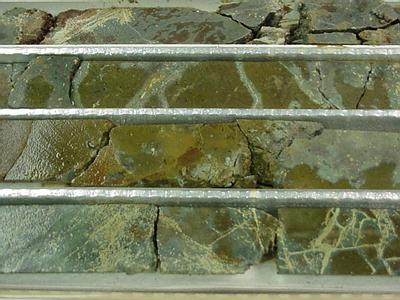
3.

4. The numbers at the top of the core sample show the depth in meters from where the core was taken.

5. Some of the questions scientists ask about the cores is how old is the rock and what fossils can be found. If they can identify the fossils found in the cores, they can put together a picture of the climate in Antarctica during the time those fossils were alive. This gives them a picture of the geological history of Antarctica.
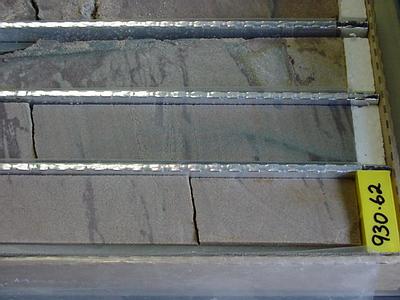
6. Here is the oldest rock core in the lab. Brought up from a depth of 930 meters below the surface of the earth, it’s estimated age is between 30 and 50 million years old. The other abundant material here is ice. The average snow fall all over Antarctica is about 7 cm of snow a year, but it never melts so for thousands of years the layers have built up. As one layer builds on another it compresses the snow beneath it to ice which over the thousands of years, have formed the ice sheets and glaciers that cover 98% of Antarctic’s surface. In many areas the ice is over 4000 m thick, with the continental averages of 2500 –2800m. Trapped inside the ice are tiny gas bubbles filled with the air at the time the ice was formed. This trapped air can give us information about what the climate was like when the snow fell. Digging down into the ice sheets produces ice hundreds and sometimes thousands of years old.
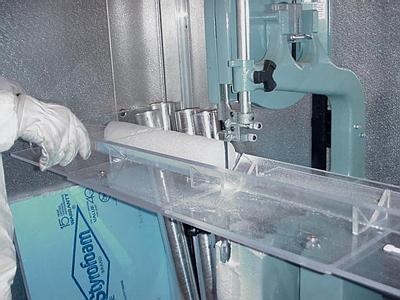
7. Similar to the rock cores, these ice cores are first sliced in half so that one half can be preserved while the other half is studied.

8. Since the cores must always be kept frozen to preserve the air bubbles and the texture of the ice, the cutting must be done inside a walk in freezer which is kept at –20oC. Dave, who will do the cutting is dressed for the occasion.
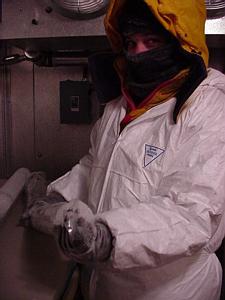
9. This is Nancy Bertler of the University of New Zealand at Victoria. She is bagging some ice cores after they have been sliced, getting them ready for shipment back to the university.
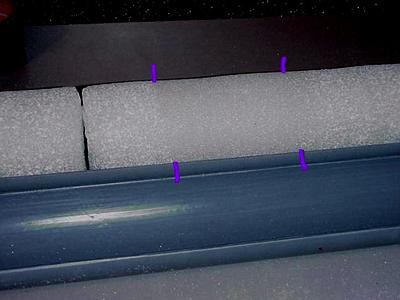
10. Here you see an ice core after it has been sliced. The markings on the photo show one year of snow. Look closely and see if you can tell the difference between the ice on either side. Similar to tree rings, these ice variations give scientists a clue to the weather patterns when the ice was formed. There is much work to be done on these ice cores in the years to come. If this work looks interesting to you, consider studying geology or glaciology. or
Contact the TEA in the field at
.
If you cannot connect through your browser, copy the
TEA's e-mail address in the "To:" line of
your favorite e-mail package.
|
